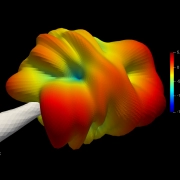How does human body interfere with your devices?
Designing antennas for electronic devices such as smartphones, smartwatches, and earplugs involves dealing with challenging factors to result with optimal performance.
One of the challenges in this process is the impact of the human body on antenna performance.
In this article we want to explore how the human body interferes with device functionality and share some insights for overcoming these challenges.
The challenge of human interaction
When designing antennas for consumer electronics like mobile phones, smartwatches, portable computers, the interaction between the device and the human body significantly affects antenna performance.
Human tissue absorbs and reflects electromagnetic waves, which can lead to signal fading and interference. This fact is critical to consider during the design phase because finding the right balance between signal quality and minimizing interference is challenging.
How a human body affects antenna performance
First, human tissue, primarily composed of water and electrolytes, absorbs radio frequency (RF) signals. When a device is held close to the body, such as a smartphone held to the ear or a smartwatch worn on the wrist, the signal strength can be significantly reduced.
Secondly, a human body can reflect and scatter RF signals, causing multipath effects. This can lead to phase cancellation and fading, resulting in a weaker and less reliable signal.
Thirdly, the proximity of the human body can disturb the antenna, changing its resonant frequency and reducing its efficiency. This effect is particularly strong in small devices like earplugs and smartwatches.
Also, there are regulatory requirements that limit the amount of RF energy that devices can release towards the human body to ensure user safety. Meeting these SAR limits often requires careful antenna design and placement.
Recommendations for optimal antenna placement
To reduce the negative impacts of the human body on antenna performance, here are some recommendations for choosing good antenna placement.
- Whenever possible, place antennas in locations that maximize their distance from the body. For smartphones, placing the antenna at the top or bottom of the device can help reduce direct contact with the head or hand.
- Implementing multiple antennas and using techniques like MIMO (Multiple Input Multiple Output) can help overcome signal degradation caused by body interference. Multiple antennas can improve signal reliability.
- Use shielding techniques to minimize the absorption and reflection effects caused by the body. Special materials can be used to shield the antenna and direct RF energy away from the body.
- Utilize advanced materials with better RF properties for the device casing. Materials that do not significantly absorb RF energy can help maintain signal strength.
- Using simulation software helps designing antenna placement, to model the interaction between the device and the human body. CENOS RF simulation software can simulate how RF waves generate around and through the human body, allowing for optimization before physical prototyping.
Case study: Smartphone held in hand
To illustrate the impact of the human body on antenna performance, we created an example simulation of a smartphone held in hand.
Using CENOS RF simulation software, we can visualize how the hand affects the distribution of radio waves through the device.
The following visual shows how the hand’s presence changes the electromagnetic field distribution, causing areas of reduced signal strength.
Simulation Nr 1: Hand holding a device
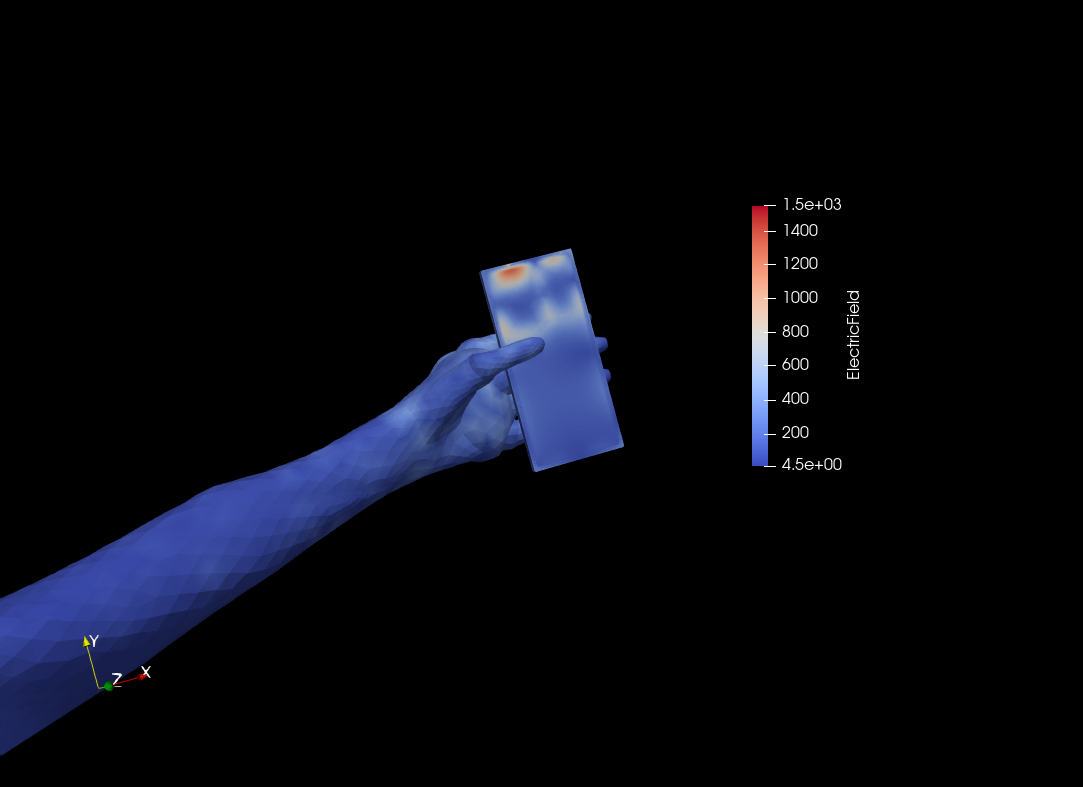
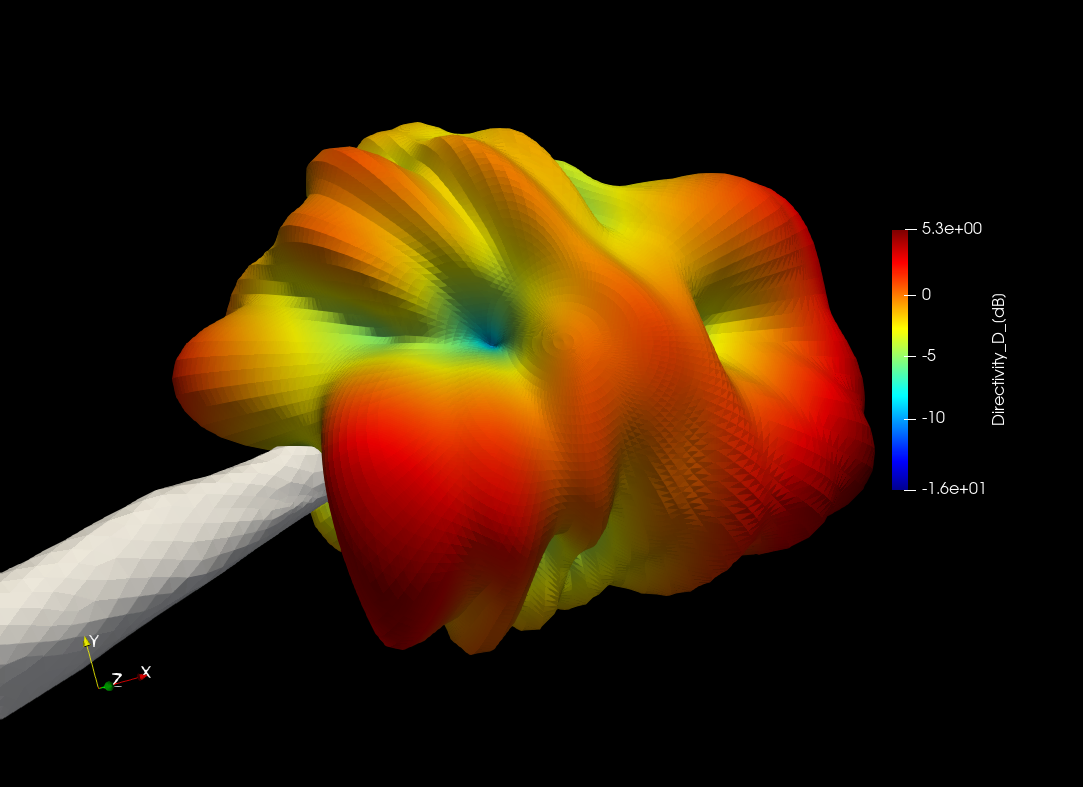
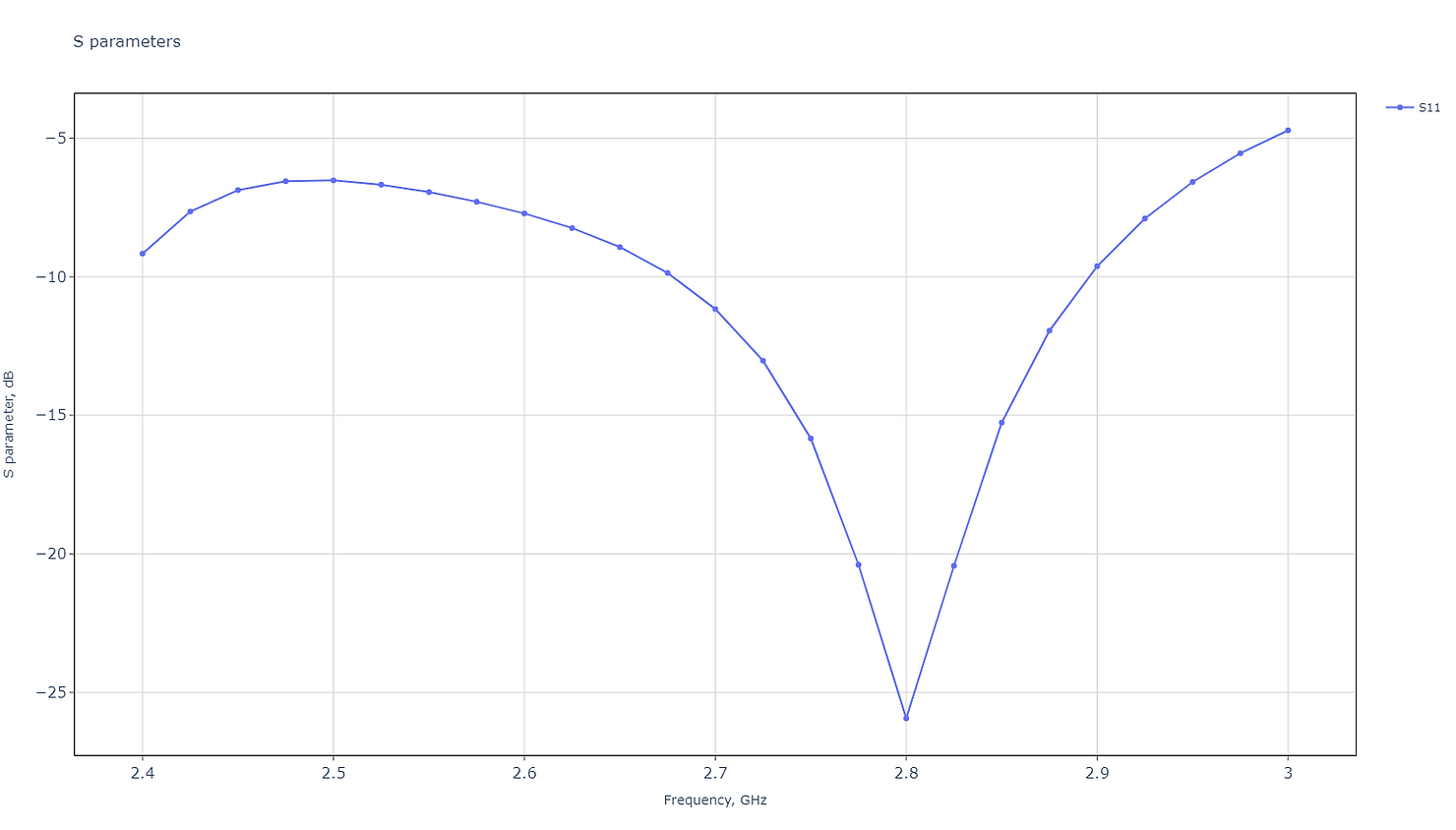
Simulation Nr 2: Only device
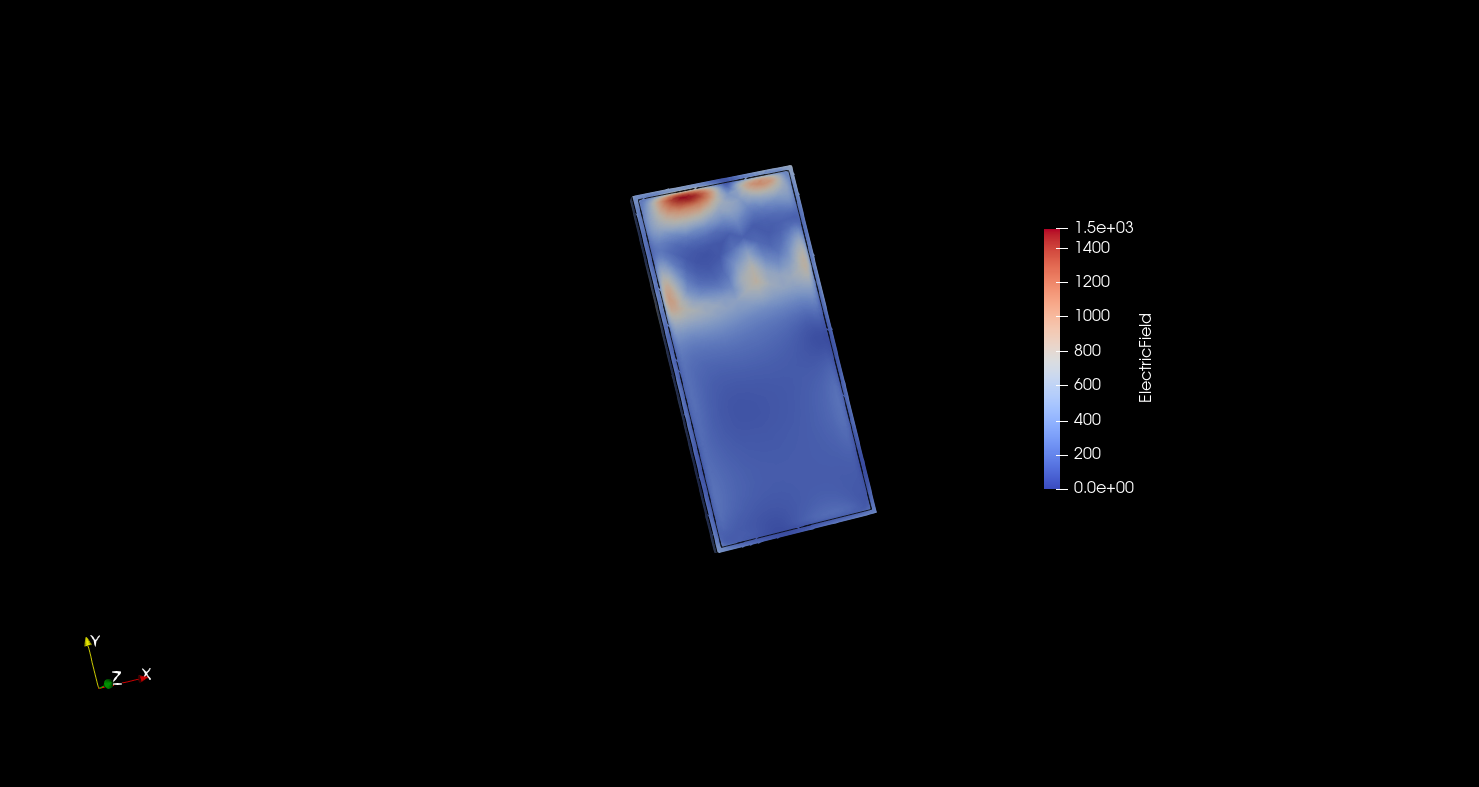
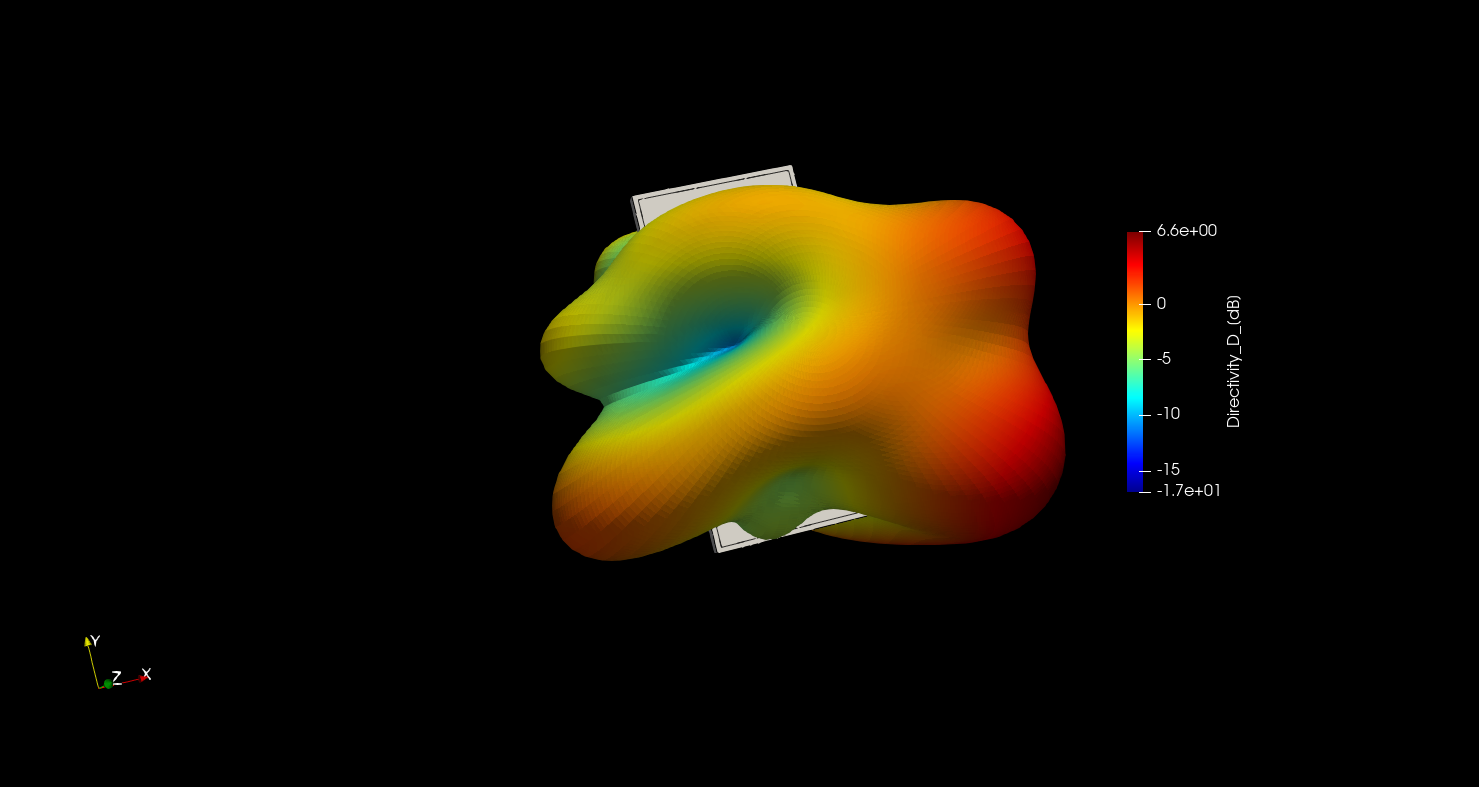

In this scenario, the simulation reveals areas where signal attenuation is most significant.
Engineers can use this information to adjust the antenna design and placement to ensure that even when held, the smartphone maintains a strong and reliable signal.
What can we learn from that
The interference of the human body with device antennas is an important factor in the design of modern electronics. By understanding the challenges and leveraging advanced simulation tools, engineers can optimize antenna placement to reduce these effects.
The future of antenna design lies in the continuous improvement of materials, design techniques, and simulation accuracy, ensuring that our devices work seamlessly in the hands of users.

